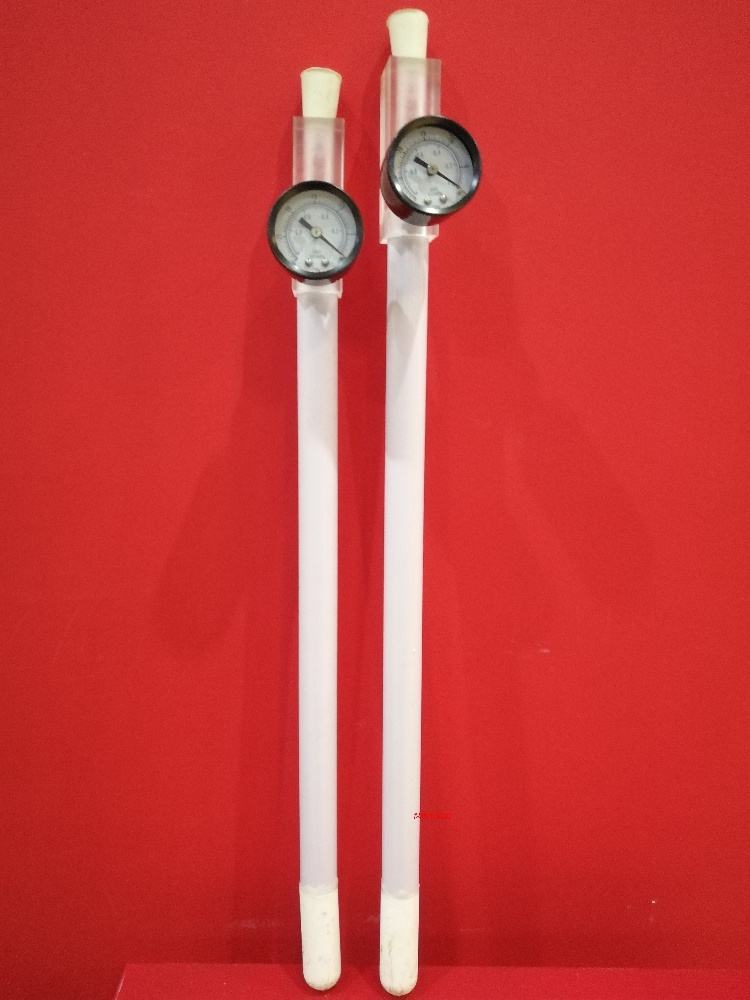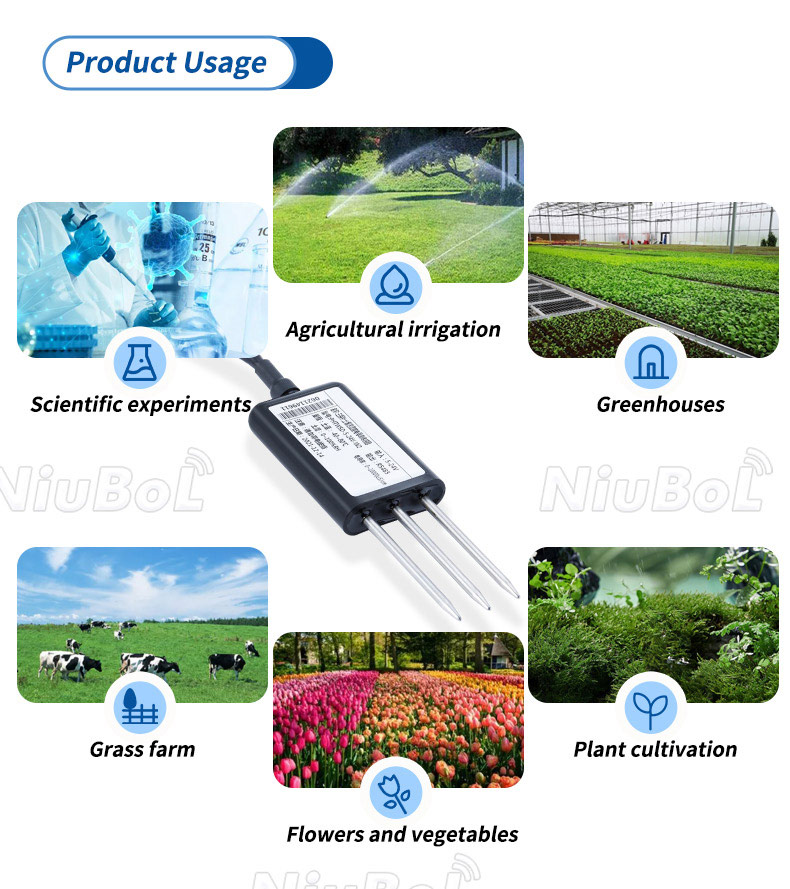

— Blogs —
—Products—
 Consumer hotline +8618073152920
Consumer hotline +8618073152920 WhatsApp:+8615367865107
Address:Room 102, District D, Houhu Industrial Park, Yuelu District, Changsha City, Hunan Province, China
Product knowledge
Time:2024-03-10 16:38:53 Popularity:1331
Soil moisture sensors are devices used to measure the water content in soil. They are an essential tool for agriculture, horticulture, and environmental monitoring. The working principle of a soil moisture sensor can vary depending on the type of sensor, but most commonly, they operate based on one or a combination of the following technologies:
1. Capacitive sensors:
These sensors work on the principle of capacitance. They consist of two conductive plates separated by a dielectric material (usually soil). When soil with a certain water content is present between the plates, it acts as a dielectric, altering the capacitance. By measuring the change in capacitance, the sensor can determine the soil moisture content. Capacitive sensors can be affected by temperature, soil type, and compaction, but they are generally reliable and can provide rapid measurements.
2. resistive sensors:
Also known as soil resistivity sensors, these devices measure the electrical resistance of the soil. Water is a good conductor of electricity, so as soil moisture content increases, the resistance decreases. By passing a small electric current through the soil and measuring the voltage drop, the sensor can infer the moisture content. Resistive sensors are less affected by temperature changes but can be influenced by soil composition and can wear out over time.
3. Time Domain Reflectometry (TDR) sensors:
TDR sensors send a short pulse of electromagnetic energy through a coaxial cable that is buried in the soil. The speed at which the pulse travels is affected by the soil's water content. By measuring the time it takes for the pulse to return to the sensor and the strength of the returned pulse, the sensor can calculate the soil moisture content. TDR sensors provide high-resolution measurements and are not affected by temperature or soil type, but they are more complex and expensive than capacitive or resistive sensors.
4. Frequency Domain Reflectometry (FDR) sensors:
Similar to TDR sensors, FDR sensors use reflected electromagnetic waves to measure soil moisture. They send a constant frequency signal through a sensor probe and measure the reflection coefficient, which is influenced by the soil's water content. FDR sensors are less complex than TDR sensors and can provide good results, but they may be more affected by soil type and temperature.
Soil moisture sensors work by measuring the volumetric water content in the soil, which is the amount of water present in the soil as a percentage of the total volume. There are different types of soil moisture sensors available, but the most common ones use either capacitive or resistive sensing methods.

5. Tensiometers:
- Tensiometers are another type of soil moisture sensor that measures soil water tension, which is the force required to extract water from the soil. They consist of a porous ceramic cup connected to a water-filled tube. As the soil dries out, water moves from the tensiometer into the soil, and the tension in the tube changes.
- By measuring the tension in the water column, the sensor can provide an indication of how much water is available to plants in the soil.

Soil moisture sensors can be installed in the field or attached to plants, and some can even be integrated into irrigation systems to control watering based on actual soil needs. These sensors are crucial for efficient irrigation, precision agriculture, and environmental monitoring, as they provide valuable data on soil conditions that can influence plant growth and water resource management.
Overall, soil moisture sensors provide valuable information about the water content in the soil, helping farmers and gardeners optimize irrigation practices, prevent overwatering or underwatering, and ensure healthy plant growth. The choice of sensor type depends on factors such as the specific application, soil type, and budget considerations.
Agriculture-Sensors-Catalog-NiuBoL-2024.pdf
Related recommendations
Sensors & Weather Stations Catalog
Agriculture Sensors and Weather Stations Catalog-NiuBoL.pdf
Weather Stations Catalog-NiuBoL.pdf
Related products
 Combined air temperature and relative humidity sensor
Combined air temperature and relative humidity sensor Soil Moisture Temperature sensor for irrigation
Soil Moisture Temperature sensor for irrigation Soil pH sensor RS485 soil Testing instrument soil ph meter for agriculture
Soil pH sensor RS485 soil Testing instrument soil ph meter for agriculture Wind Speed sensor Output Modbus/RS485/Analog/0-5V/4-20mA
Wind Speed sensor Output Modbus/RS485/Analog/0-5V/4-20mA Tipping bucket rain gauge for weather monitoring auto rainfall sensor RS485/Outdoor/stainless steel
Tipping bucket rain gauge for weather monitoring auto rainfall sensor RS485/Outdoor/stainless steel Pyranometer Solar Radiation Sensor 4-20mA/RS485
Pyranometer Solar Radiation Sensor 4-20mA/RS485
Screenshot, WhatsApp to identify the QR code
WhatsApp number:+8615367865107
(Click on WhatsApp to copy and add friends)
